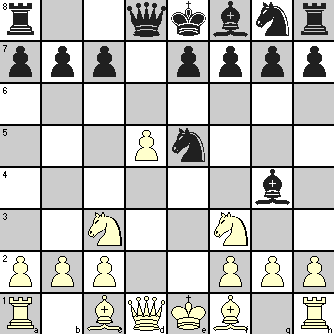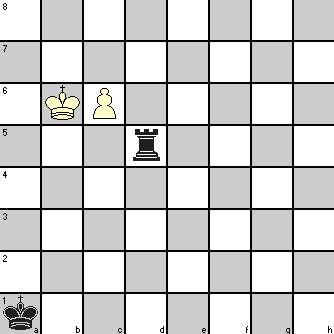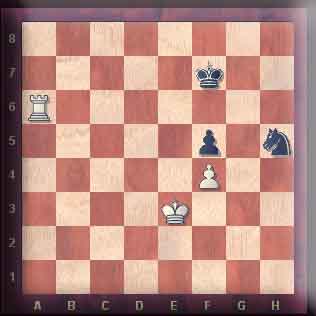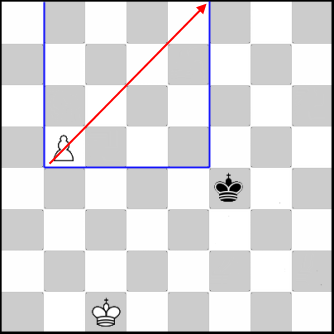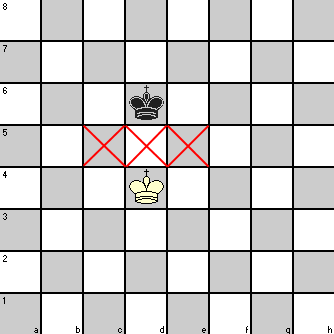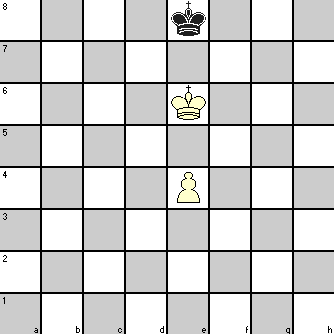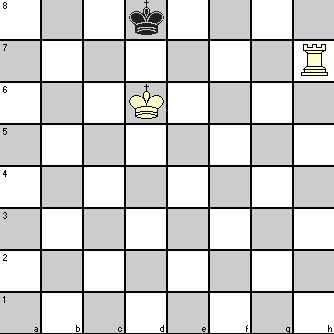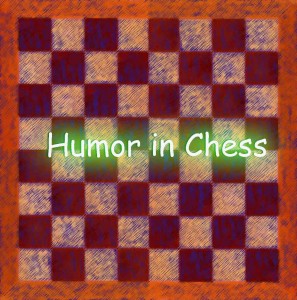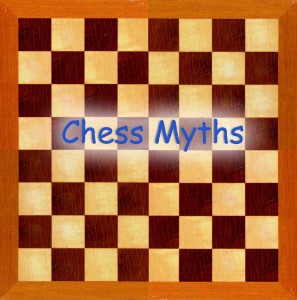
Here we are discussing some basic strategies that can give you advantage, however microscopic it may be. Of course there is always exception to the rules, but exceptions occur much less frequently than the normal situations, don’t they? These strategies are described from White’s point of view, so what is good for White is bad for Black and vice versa.
Pawn structures
- Pawns are strong when they are in a chain; try to avoid splitting them into isolated groups.
- Isolated or hanging pawns tend to be a liability, try to avoid at least till the end game.
- Pawn chain shapes that look like /\ (an inverted V) from your side tend to be stronger than those that look like a \/.
- Doubled pawns are weak, try to avoid getting them.
- If you can maintain center pawns, you get more options to organize attacks.
- Your own pawn chains may block free movement of your pieces, mainly the bishops if stuck behind the chain. Avoid this disadvantage.
- Pawns cannot move backwards. Sometimes the opponent will deliberately lure you to advance your pawns to create weaknesses in your pawn structure. So think carefully before pushing them forward.
- Pawns in front of your castled king are there to guard the king. Try to avoid breaking up their line unless you have planned to launch a king-side attack with those.
- Check the possibility of getting a passed pawn and then defending it. A passed pawn becomes a thorn in the opponent’s flesh and even when it fails to become a queen, it can gain you significant material advantage through opponent’s efforts to neutralize it.
- Passed pawns in rook’s file are weaker than passed pawns in other files in the end game as it is easier for the opponent’s king to block the pawn in rook file.
Knights
- Knights play well in complex and locked positions. Assess their value and plan their movement accordingly.
- A knight posted on d6 and e6 squares can be a nuisance to your opponent. Try to get them there (with adequate support of course).
- Knights play well in the center part of the boards. Try to avoid keeping them at the sides (a- and h-files) unless your tactical plan calls for such positioning.
- Knight fork can be a very potent weapon. Creating such possibility can upset the plans of your opponent.
- Knights have a relatively poor play in the end game when the board is fairly open but with a number of opponent’s pawns ready to advance.
- In the end game, a knight may be helpless in preventing your opponent’s pawns if those are on two sides of the board.
Bishops
- Bishops, if not developed early, may get bogged by your own pawns blocking the diagonals. Be aware of this.
- Bishops play well if there are many open diagonals and a bishop pair in such situations can give you a great advantage.
- For above reasons, bishops are more helpful in the end game.
- If your bishop can control the long diagonal towards your opponent’s castled position, it can give you considerable leverage in your attack on the king.
- If you have only a single bishop in the end game, half the squares on the board are inaccessible to it. But with a few linked pawns of your own, a bishop can be a great help to support your pawn march and delay your opponent’s pawn advance (if you can position it in time).
- In the end game, a bishop can be better than a knight if the pawns are at two sides of the board.
- In general, bishop pair is more advantageous than the knight pair during the end game.
Rooks
- Rooks, like bishops, plays better if there are some open files.
- Try to take control of open files with your rooks. Two rooks in same open file provide a lot of opportunities for attack.
- Rook positioned in the 7th or 8th row becomes a headache for the opponent. Two rooks on that row can often provide mating attack or gain of material.
- Two rooks with lots of maneuvering space can often stand up to the opponent’s queen, particularly when minor powers and pawns are absent in the end game. You will find many games in chess archives where one player has given up the queen in exchange for two rooks.
- In endings with where you have King, Rook and Pawn against King and Rook, your rook should be behind the pawn and your king should be next to the pawn to get a win.
Queen
- Even though it is the strongest piece, it needs a rook or some minor pieces for its most effective use.
- Avoid taking the queen too far out during the openings as it is likely to get ‘harassed’ by opponent’s minor pieces to cause you a loss of tempo.
King
- Always a liability, is it? It becomes more so, if it is at its original position. Aim to castle at the earliest opportunity.
- Both kings castled on the same side normally do not get an immediate early attack. You have to maneuver through the Queen’s side. But castled on the opposite sides allow both players to launch direct attack through pawn advances.
- Kings come into their own in the end game with major pieces removed from the board. Try to keep king near your pawn group for their advance. Be aware of the ‘Square” and ‘opposition’.
- In the endings with King and Pawn vs. King, make the king lead the pawn, not the other way.
- Make yourself familiar with the standard strategies for handling different types of endings with pawns, minor pieces, rooks etc. Learn to identify situations that may give win or only a draw.
Positional
- Initial pawn movements facilitate the development of your minor pieces. Do not get distracted from this objective.
- In the opening phase, avoid moving the same piece twice (unless forced to do so and learn to avoid those kinds of positions). It loses you tempo.
- You gain tempo when you can achieve two objects in one move. For example, a pawn move may attack some piece while opening a line for your own pieces. Look for such opportunities.
- Try to seize control of the center (d4, d5, e4, e5 squares) as this will give you more play and better attacks. Of course, some opening strategy, particularly for black), may deliberately surrender some control in the center to gain more play in the flanks to neutralize opponents advantage.
- Don’t be greedy! Sometimes you may find an easy pawn to pick up but it may be a trap (‘poisoned pawn’). Accepting it will often allow the opponent to launch a powerful attack and often the best way to neutralize is to return that material instead of trying to hold on to it.
- Do not launch a premature attack. Develop your pieces such that they coordinate well with one another and then plan your attack. Unless you do this, you may find your attack to lose steam and that may put you at a disadvantage.
- A locked center (your and opponent’s pawns facing each other without being able to capture any) restricts movement of pieces in the center and thus facilitates flank attack without fear of counter-play at the center. Keep this possibility in mind.
- Check which of the opponent’s pieces is controlling the play. Try to capture it at the earliest.
- Exchanging your inactive piece with a similar but active piece of the opponent gives you an advantage. Try to avoid such exchange if the reverse is true.
- When in trouble, remember that attack is often the best form of defense. Look for such possibility.
- Since coordination of pieces gives advantage, try to cut off communication between opponent’s pieces e.g. by advancing a supported pawn in the opponent’s line of communication.
- Be aware of pins and how to create one. Properly handled, they can yield significant advantage.
- When cornered in the end game, look for opportunities to get into a position allowing stalemate and draw. Sometimes, a piece sacrifice may offer you this opportunity in an otherwise desperate situation. When you have an upper hand, guard against the opponent taking this route to draw the game.
- Whatever openings you normally adopt, learn the ideas behind the moves and the targets to be achieved. Without this focus, you will only create weaknesses for yourself.
- In general, King’s pawn openings lead to more open games and direct attacks on the king. Queen’s pawn openings create somewhat closed positions that need more maneuvering and positional play to launch indirect attacks.

